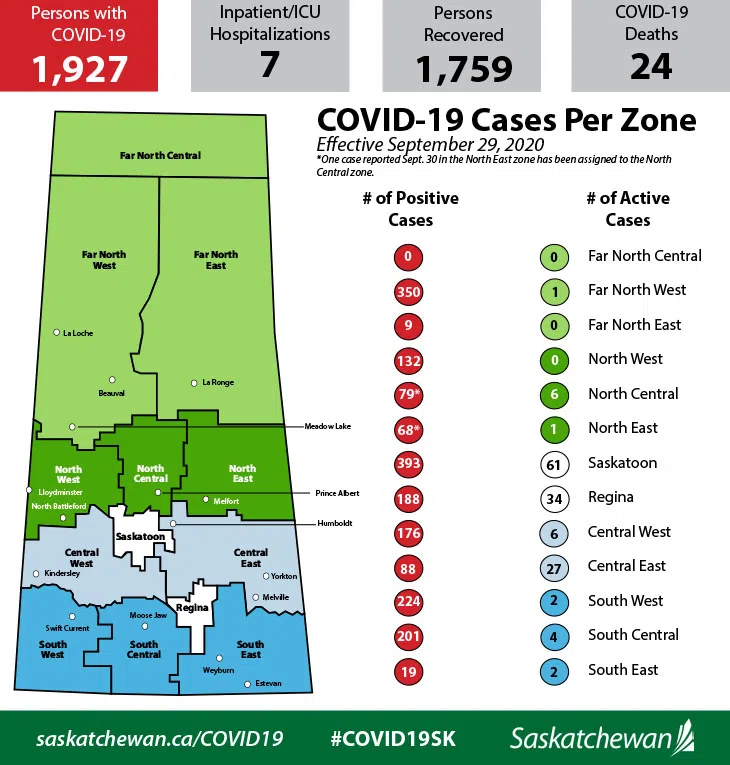Saskatchewan has 14 new cases of COVID-19 on October 1, which brings the reported total to 1,927.
Five of the new cases are in the Central East, four in Regina, two in South West and one each in the North Central, North East and South Central zones.
Of the 1,927 reported cases, 144 are considered active. Thursday’s nine new recoveries means the province is at 1,759 recoveries.
Seven people are in hospital receiving inpatient care. Four of those patients are in Saskatoon, one is in Regina and two are in the South West.
There have now been 34 cases of COVID-19 recorded among the province’s children and youth since school resumed on September 8.
22 cases are in the Saskatoon zone, six in Central East, three in Regina, two in the South East and one in the Far North West.
Since the week of September 14, 987 tests were completed on asymptomatic individuals at three high schools in the province.
SHAHAB SAYS RISE IN CASES EXPECTED
During the province’s COVID-19 update, Chief Medical Health Officer Dr. Saqib Shahab said that the rise in cases around the province could have been expected.
Shahab says that while we are seeing higher numbers than in the summer, he wouldn’t go as far as calling it a surge.
“Our new cases are trending up, and we were expecting to see this, especially as schools open, as our economy reopens,” said Shahab. “But we need to make sure that we do everything that we have been doing to keep this curve as flat as possible. It may not be as flat as it was towards the end of summer, but even now we have to keep it at this level that we’re at currently as much as possible.”
Shahab says while other parts of the Canada, and the world, are starting to see a second wave of the virus, numbers are still relatively low in Saskatchewan.
He adds that for the province to continue to have lower case numbers, we need to continue doing everything we’ve been taught.
“We have to remember that given what’s happening through other parts of Canada, other parts of the world, this is a strategy that we have to keep doing for the rest of the fall and winter,” said Shahab. “These are behaviours that have served us well, and it’s important that continue doing what we’ve been doing to make sure we stay at the level we are at.”
Shahab says one of the easiest ways to help track the virus, is to download the COVID Alert App.
“I think this is going to be an important addition to contact tracing, it doesn’t replace contract tracing, but this is going to be essential in settings where you don’t know who your close contacts are,” said Shahab. “Having this app downloaded and active is important in my view, very important. It’s only useful if everyone, or most people, have it downloaded and active.”








